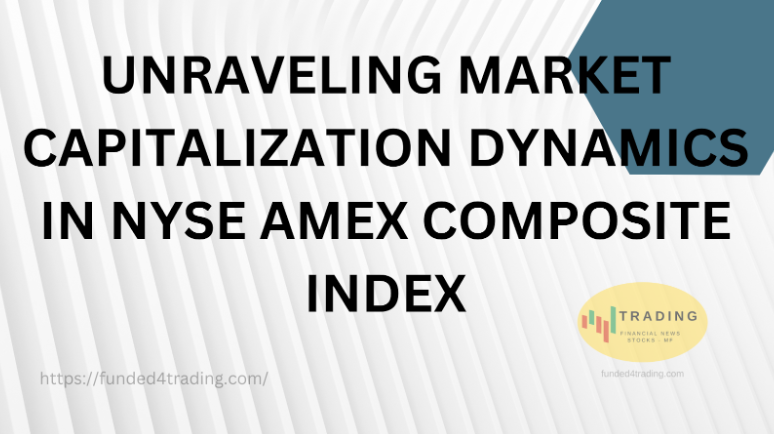Introduction:
In the intricate realm of financial markets, understanding the dynamics of market capitalization is paramount. For investors and financial enthusiasts alike, the NYSE AMEX Composite Index stands as a robust indicator of market trends and economic health. In this blog post, we will delve into the nuances of market capitalization within this index, shedding light on its significance and the dynamics that drive it.
The NYSE AMEX Composite Index: A Brief Overview:
The NYSE AMEX Composite Index, a merger of the New York Stock Exchange (NYSE) and the American Stock Exchange (AMEX), is a comprehensive gauge of the equities market. Comprising a diverse array of stocks, the index reflects the performance of companies across various sectors and industries.
Market Capitalization Defined:
At the heart of the NYSE AMEX Composite Index lies market capitalization – a fundamental metric that encapsulates a company’s total market value. Calculated by multiplying a company’s share price by its total outstanding shares, market capitalization provides insights into a company’s relative size within the broader market.
Large, Mid, and Small Cap: Categorizing Market Capitalization:
The NYSE AMEX Composite Index is a mosaic of companies categorized by market capitalization. Understanding these classifications is pivotal for investors seeking to tailor their portfolios to specific risk and return profiles.
1. Large-Cap Stocks: These are established giants with substantial market capitalizations. Investors often view large-cap stocks as stable, less volatile investments. Blue-chip companies, exemplifying stability and reliability, dominate this segment.
2. Mid-Cap Stocks: Representing companies with moderate market capitalizations, mid-cap stocks are seen as a middle ground between stability and growth potential. Investors may gravitate towards mid-caps for a balance of risk and return.
3. Small-Cap Stocks: Companies with smaller market capitalizations fall into this category. While small-cap stocks may present higher growth potential, they also come with increased volatility and risk.
Market Capitalization Trends and Influencing Factors
The dynamics of market capitalization within the NYSE AMEX Composite Index are shaped by various factors, offering investors valuable insights into market trends.
1. Economic Conditions: The health of the broader economy significantly impacts market capitalization dynamics. During periods of economic growth, companies may experience increased valuations and market capitalizations. Conversely, economic downturns can lead to contractions in market capitalization.
2. Industry Trends: Different sectors exhibit varying market capitalization trends based on industry-specific factors. Technological innovations, regulatory changes, and global events can impact industries differently, influencing market capitalization within the NYSE AMEX Composite Index.
3. Investor Sentiment: The collective sentiment of investors plays a pivotal role in market capitalization dynamics. Positive news, favorable earnings reports, or innovative developments can boost investor confidence, leading to increased market capitalizations.
4. Corporate Performance: The financial health and performance of individual companies are, unsurprisingly, fundamental drivers of market capitalization. Strong earnings, efficient management, and strategic initiatives can propel a company’s market value.
Conclusion:
Navigating the complexities of market capitalization dynamics within the NYSE AMEX Composite Index requires a keen understanding of the factors at play. Investors armed with insights into large, mid, and small-cap stocks can craft portfolios that align with their financial goals and risk tolerance.
As the global financial landscape continues to evolve, monitoring market capitalization trends within the NYSE AMEX Composite Index remains a valuable practice. In this dynamic environment, staying informed and adaptable is the key to navigating the ever-changing currents of the equities market.

